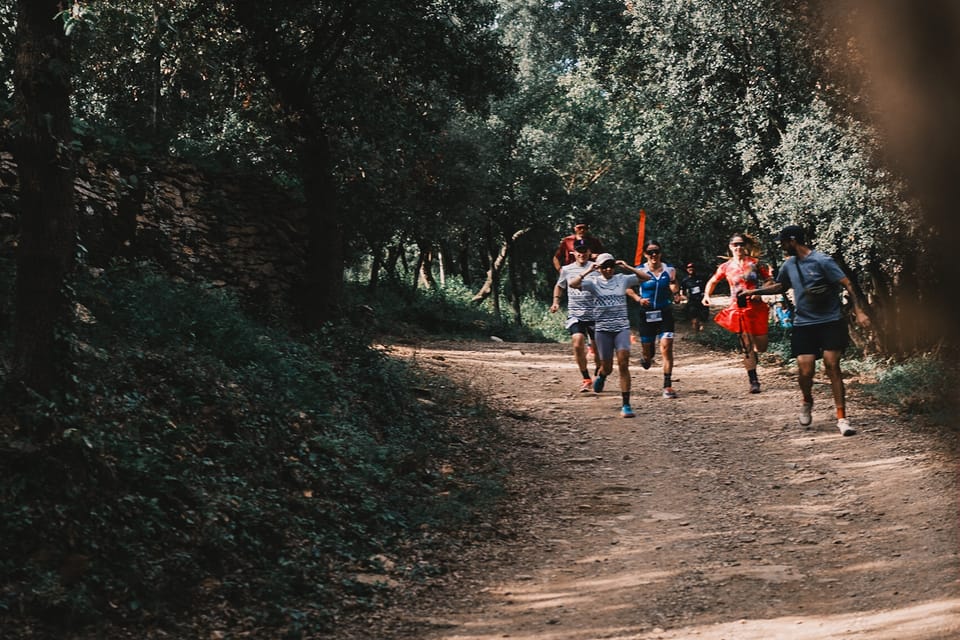Why Running & Cycling Brands Should Team Up

Running and cycling have always shared something deeper than endurance. Both are about rhythm, freedom, and community. Yet when it comes to brand worlds, they still feel divided.
That division no longer fits how people move. The same athlete often switches between running shoes and a bike computer. The same city that hosts a marathon also closes roads for a gran fondo the next weekend.
It’s time brands caught up with how real athletes train and connect.
Shared Foundations: The Overlap That Already Exists
Many Athletes Already Do Both
Cyclists often run during the off-season. Runners pick up cycling to train without impact. The crossover is already there — the brands just haven’t built around it yet.
If a cycling apparel company collaborates with a running shoe brand, they reach people who live in both worlds. It’s a natural community extension, not a stretch.
Communities That Thrive on Belonging
Adidas Runners in Munich, Paris, and Berlin showed how brand-led run clubs can become cultural hubs — music, movement, connection.
Cycling communities have similar power but are often split by region or discipline. Gravel, road, urban — each has its own identity.
Imagine combining the two: a morning run through the city, followed by a social ride to the countryside. One shared story, two sports, one community.
Shared Values
Runners and cyclists speak the same language: discipline, exploration, and self-improvement. When brands speak across both audiences, they amplify that shared mindset instead of narrowing it.
What Collaboration Could Look Like
1. Joint Events
Co-branded events can be powerful. Think of a weekend festival with both a 10 km run and a 70 km gravel ride — shared start village, shared cafés, shared stories.
Events like UTMB Mont-Blanc or L’Étape du Tour already prove that endurance gatherings attract mixed audiences. Imagine a brand presence that celebrates both.
2. Co-Developed Gear
A capsule line designed for movement — apparel that works across both disciplines. Lightweight layers, reflective fabrics, recycled materials.
UK brand Proviz already plays in both spaces with high-visibility gear for runners and cyclists. It proves crossover products can work commercially and practically.
3. Shared Ambassador Teams
Many professional triathletes and gravel riders run. Many runners cross-train on bikes. Shared ambassadors who authentically live both sports can bridge audiences better than any ad campaign.
4. Combined Challenges
Online communities make crossover easy. A “Run & Ride” challenge could invite members to log both activities in one month. Shared leaderboards, shared storytelling, and shared giveaways reinforce inclusion rather than segmentation.
5. Content and Education
Brands can co-create training resources:
- How cycling supports running recovery
- How running builds endurance for climbing
- Combined routes in European cities — 5 km run + 30 km ride
It’s practical, engaging, and community-first.
Examples Across Europe
Adidas Runners: The Social Blueprint
Cities like Munich, Berlin, and Paris show the power of running communities built on belonging. People show up not only to train but to meet like-minded individuals. Add cycling into that format, and you instantly broaden reach and purpose.
Škoda’s “We Love Cycling”
Škoda turned cycling into a storytelling platform, connecting riders through shared content and events. That same format could expand into running — a lifestyle movement across both sports.
Gravel + Trail Crossovers
Events like SGRAIL are alraedy leading the way with this. But The Traka in Girona or Badlands in southern Spain attract runners and cyclists who love exploration, not just performance. Imagine a brand that could bridges gravel and trail could own this crossover community completely.
Why This Matters Now
- Athletes are multidisciplinary. More people train across sports than ever before.
- Communities want meaning. They care less about brand labels and more about connection.
- The market is saturated. Growth comes from crossover and collaboration, not isolation.
- Shared purpose sells. Running and cycling share the same environmental and wellness narratives — clean movement, human power, and sustainable progress.
By collaborating, brands move from selling products to building ecosystems of movement.
Potential Challenges
Every collaboration has limits.
Cycling products focus on compression, aerodynamics, and fabrics that perform at speed. Running prioritises cushioning, lightness, and freedom. Getting both right requires real co-design and testing.
There’s also identity risk. Communities value authenticity. Forced partnerships don’t work.
That’s why collaboration should start with shared purpose — not shared profit.
What the Future Could Look Like
Imagine this:
A European endurance festival uniting running and cycling under one experience.
- A Saturday gravel ride followed by a Sunday city run.
- Shared village, local coffee partners, music, open community.
- Sustainability at its core: recycled gear, refill stations, zero single-use plastic.
Participants wear co-branded apparel from two brands that finally decided to stop competing for the same people — and started building something together.
That’s what community looks like when brands listen.
Final Thoughts
Both runners and cyclists chase the same feeling: movement that clears the mind and connects us with others.
Brands that understand that — and act on it — can redefine what it means to be part of a sports community in Europe.
It’s not about running or cycling anymore.
It’s about movement. Together.

Member discussion